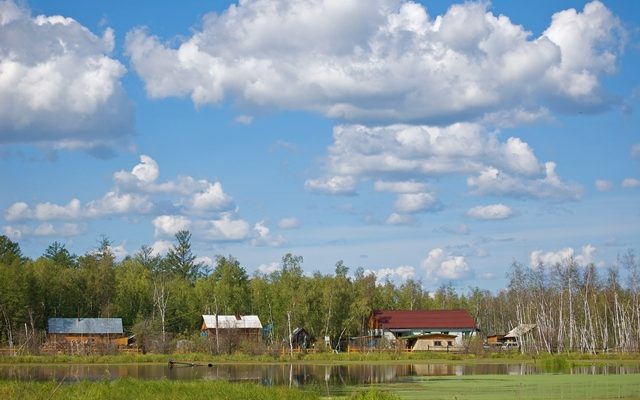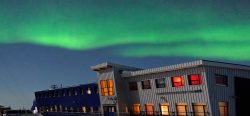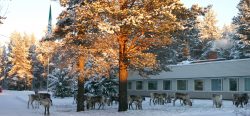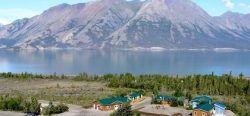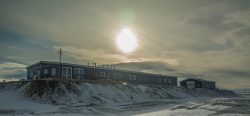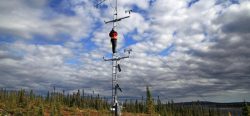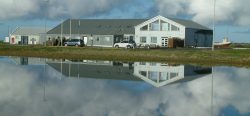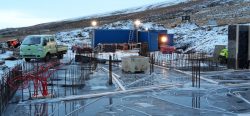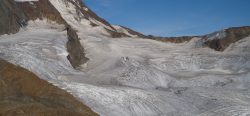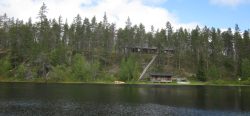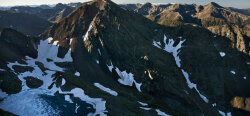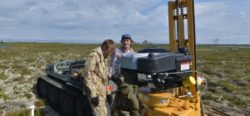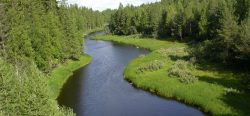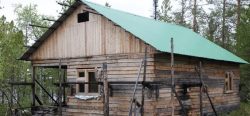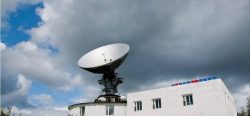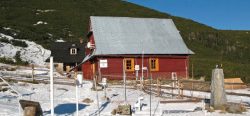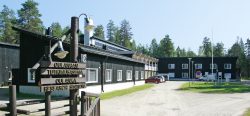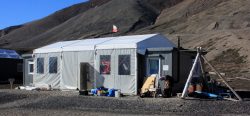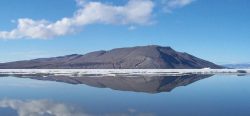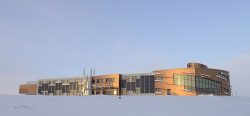Contact Details
Cryolithozone, Siberian Branch of
Russian Academy of Sciences
41, Lenin Ave., Yakutsk,
Republic of Sakha(Yakutia),
677980 Russia
- Phone: +7 (4112) 33-58-97
Collaborator in the project until spring 2022
STATION NAME AND OWNER
The Spasskaya Pad Scientific Forest Station is owned and run by the Institute for Biological Problems of Cryolithozone (Siberian Branch of the Russian Academy of Sciences – IBPC SB RAS).
LOCATION
The Spasskaya Pad Scientific Forest Station (62°14’ N, 129°37’ E; elevation approx. 220 m a.s.l.; study area 4.43 km2) is located on a Pleistocene terrace at the western bank of the middle sections of the Lena River in Central Yakutia region of Republic of Sakha (Yakutia), Russian Federation, approximately 20 km north of the city of Yakutsk and around 480 km south of Arctic CircleA line of latitude currently at 66° 33? 44? (66.5622°) north of the Equator. It is the southern limit of the region of the Earth that experiences the 'midnight sun'.... More. This area is located in the zone of continuous permafrostPermafrost is frozen ground that remains at or below zero degrees Celsius (32 degrees Fahrenheit) for two or more years. It forms in regions where the mean annual temperature is... More (permafrostPermafrost is frozen ground that remains at or below zero degrees Celsius (32 degrees Fahrenheit) for two or more years. It forms in regions where the mean annual temperature is... More thickness over 150 m).
BIODIVERSITY AND NATURAL ENVIRONMENT
The main ecosystemAll the living organisms (including people) in an area as well as its physical environment, functioning together as a unit. An ecosystem is made up of plants, animals, microorganisms, soil,... More around the station is borealNorthern, from Boreas, the Greek god of the north wind.... More light taigaBoreal forest, a nearly continuous belt of coniferous trees across North America and Eurasia. Taiga is dense forest with many fallen trees and marshy soil. The term derives form the southern Siberian Turkic-Mongol... More, but there are also pine and birch forests along with alases (specific Yakutian thermokarstA landform that results when ground ice (ice-rich permafrost) melts. The melting leaves small, marshy hollows and hummocks in the land as the ground settles unevenly. See also thermokarst lake.... More formations), meadows, and mixed forests. Main forest types are red-bilberry larch (Laricetum vacciniosum), cowberry pines (Pinetum arctostaphylosum), and herby birches (Betuletum mixtoherbosum).
HISTORY AND FACILITIES
The Spasskaya Pad Scientific Forest Station was founded in 1952 by the Krasnoyarsk Forest Institute (SB RAS). In 1992, the station was transferred to IBPC SB RAS. It consists of several new or recently renovated buildings. The station is fully equipped with year-round accommodation facilities (10-12 beds, water supply, and kitchen), heating, electricity, portable electrical generators, radiotelephone, computer, printer, scanner, e-mail and internet access, etc. A laboratory is available, equipped with some basic tool-boxes and instruments, drying ovens, refrigerators, scales, etc. There is year-round available sauna and summer-time showers. Outdoor storehouses are available. The station can accommodate up to 30 persons during the summer. There are two observational towers (32 m in larch forest and 24 m in pine forest) with a wide range of micrometeorological devices and eddy-covariance systems. Three 20 m high crown-access towers with full access to any tree level in larch forest are available for botanical, morphological, and ecophysiological studies.
GENERAL RESEARCH AND DATABASES
Inter-disciplinary research is conducted at the station with focus on understanding fundamental characteristics and processes of the atmosphere, the biosphere, the hydrosphere, and the cryolithosphere. EcosystemAll the living organisms (including people) in an area as well as its physical environment, functioning together as a unit. An ecosystem is made up of plants, animals, microorganisms, soil,... More dynamics and biodiversityBiological diversity. The many and varied forms of life on Earth (collectively known as biota). As well as diversity of species (species diversity), there is also diversity within populations of a... More are also studied to assess the impact of global environmental change. Research also includes short term monitoring of different aspects of human activity. The obtained data are available at the websites of GEWEX-GAME-Siberia, JST CREST, PIN-MATRA, TCOSSiberia, and CarboEuroFlux projects.
HUMAN DIMENSION
The main human activities in the areas surrounding the Spasskaya Pad Scientific Forest Station comprise picking berries, collecting mushrooms, and breeding horses.
ACCESS
The Spasskaya Pad Scientific Forest Station is reached year-round by car within 1.5 hours from Yakutsk city. Yakutsk has an airport with daily flights to Moscow as well as a river port (Lena River).
